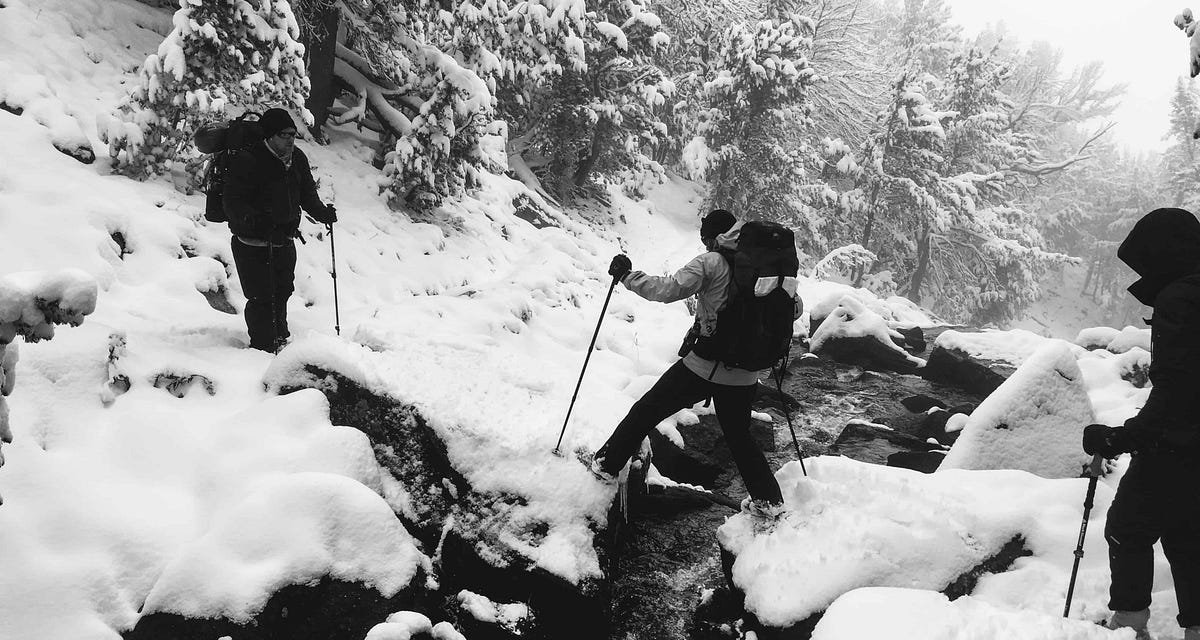The Day My Hiking Boots Became Aquariums: A Winter Trail Lesson | by Olympic Secrets | Jul, 2025

Picture this: You’re three miles into what was supposed to be a perfect winter hike in Rocky Mountain National Park, and suddenly you realize your feet feel like they’re swimming. Not metaphorically. Literally swimming. In your own boots.
That was me last February, standing on the Emerald Lake trail with what I can only describe as personal foot aquariums. Every step produced an uncomfortable squishing sound, and the Colorado cold was turning my soggy socks into tiny ice rinks inside my supposedly “waterproof” hiking boots.
I thought I was prepared. I had invested in quality winter hiking boots, moisture-wicking socks, and even those little toe warmers. What I hadn’t counted on was the relentless infiltration of snow through the gap between my boots and pants with every single step.
It started innocently enough. Fresh powder from the night before created picture-perfect conditions, and the trail looked like a winter wonderland. But with each step through the knee-deep snow, tiny amounts of powder found their way into my boots. At first, it wasn’t noticeable — just a bit of cold touching my ankles.
But snow has a sneaky superpower: it melts. And when it melts inside your boots during a strenuous hike, it doesn’t magically disappear. It pools. It soaks. It transforms your comfortable winter boots into the most expensive, uncomfortable puddles you’ll ever wear.
By the time I reached Emerald Lake, my feet were not just wet — they were starting to go numb. The combination of moisture and cold created the perfect storm for hypothermia to begin in my extremities. What should have been a triumphant moment at this gorgeous alpine destination became a panic-inducing realization that I needed to get back to warmth, fast.
The hike back was pure misery. Every step reminded me of my poor preparation, and I found myself taking increasingly frequent breaks to try and warm my feet. Other hikers I passed looked completely comfortable and dry, which only added insult to my soggy injury.
One particularly kind couple even stopped to check if I was okay. “You look like you’re struggling,” the woman said gently. When I explained my waterlogged predicament, her partner chuckled knowingly and said, “Ah, the gaiter lesson. We’ve all been there.”
“You look like you’re struggling. Ah, the gaiter lesson. We’ve all been there.”
That couple’s casual mention of “gaiters” sent me down a research rabbit hole the moment I got home. What I discovered was a whole category of protective gear I had somehow completely overlooked in my winter hiking preparation.
Gaiters, I learned, are like protective sleeves that bridge the gap between your boots and pants — creating a waterproof seal that prevents snow infiltration. The modern versions with zipper closures caught my attention immediately. Unlike the velcro systems I’d seen casual hikers use, these zippered designs promised superior protection and durability.
The more I researched, the more I realized how this simple piece of gear could have completely transformed my experience. Instead of dealing with wet feet and potential frostbite, I could have enjoyed the full beauty of that winter wonderland hike in complete comfort.
Three weeks later, I returned to the same trail — this time properly equipped. The difference was remarkable. Where I had previously fought against the environment, I now moved through it confidently. The snow that had been my enemy became part of the gorgeous scenery I could actually appreciate.
My feet stayed completely dry throughout the entire hike. No squishing sounds, no gradual numbness, no anxiety about getting back to warmth. Instead, I was able to focus on what I had come for: the stunning winter landscape, the peaceful solitude, and the satisfaction of conquering a challenging trail.
The couple I’d met on my disastrous first attempt happened to be at the trailhead when I returned. “Look at you!” the woman exclaimed, pointing at my legs. “Proper gaiters this time!” We shared a laugh about the learning curve of winter hiking, and they shared some of their own early-season mishaps.
That soggy disaster taught me more than just the importance of gaiters. It highlighted how the right gear can be the difference between a miserable endurance test and an enjoyable adventure. More importantly, it reminded me that experienced outdoor enthusiasts are usually happy to share their knowledge — you just have to be humble enough to ask.
Since then, I’ve become something of a gaiter evangelist among my hiking friends. I’ve probably prevented a dozen soggy boot disasters simply by sharing my story and pointing people toward proper winter protection gear.
If you’re planning any winter hiking adventures, learn from my waterlogged mistake. Your feet (and your enjoyment of the trail) will thank you. For detailed guidance on choosing the right protection for your winter adventures, I highly recommend checking out this comprehensive guide to snow gaiters with zipper features — it covers everything I wish I had known before my first winter hike.
- • Test all gear before heading out on longer hikes
- • Pay attention to the gap between boots and pants
- • Don’t underestimate how quickly snow can infiltrate
- • Ask experienced hikers about their gear choices
- • Invest in quality protective equipment — your comfort depends on it
Every outdoor adventure teaches us something, even when the lesson comes with soggy socks and numb toes. The mountains don’t care about our comfort, but with the right preparation and gear, we can care for ourselves while still answering their call to adventure.

